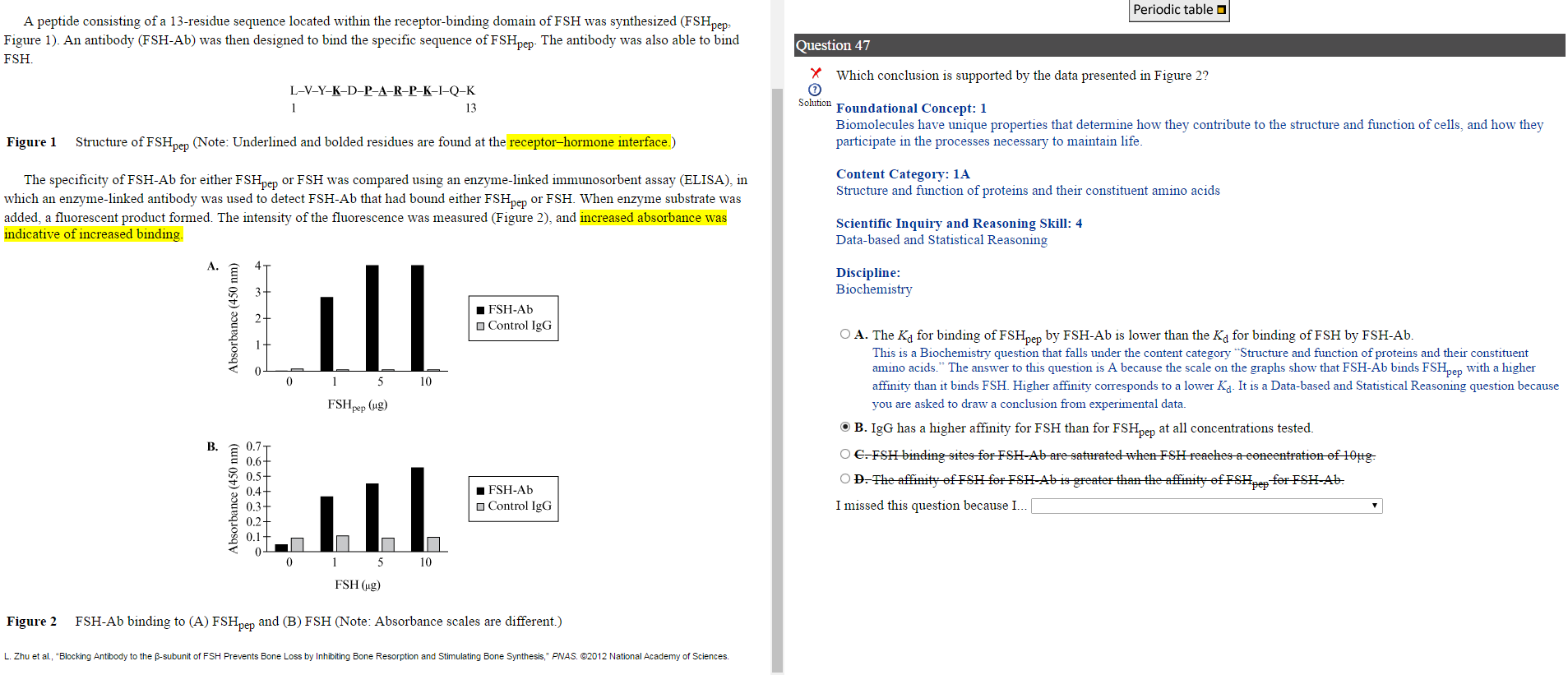- Joined
- Jul 25, 2014
- Messages
- 68
- Reaction score
- 10
Last edited:
question about the control: it controls for the specificity of the enzyme-linked antibody to FSHpep in (A) and FSH in (B). That is, we would want to ensure that the absorbance was from FSH-Ab binding. So the low to none absorbance from IgG is desired. Am I thinking about this correctly?
The way this is typically done to avoid nonspecific interactions is you'll have for example a mouse derived anti-ProteinX antibody which binds your protein of interest. Then the secondary antibody could be a goat derived anti-mouse-Fc HRP linked antibody that will provide the colormetric change.From the data given in the question, this is a valid interpretation. So what they're doing here is using an anti-body to tag the protein they want and then using an anti-body for the first anti-body to tag the first anti-body with a fluorescent tag. So the confound you want to avoid here is what if your second anti-body just happens to tag antibodies non-specifically?
There's also the possibility of the second anti-body binding other things, of course

I understand why A is correct. But why would B be incorrect? I was debating between these 2, because they both seemed correct to me. Thank you.
